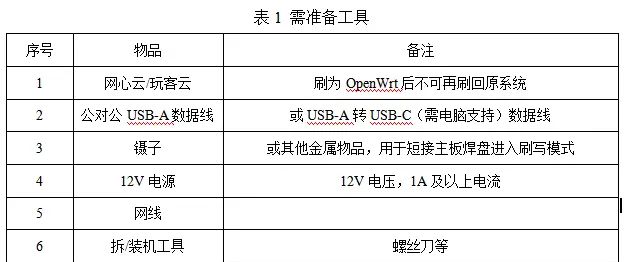类型转换与虚函数
向下转型时,虚函数表用的是对象实际类型所对应的虚函数表,而不是你转换到的那个类型的虚函数表。无论进行何种类型转换(向上、向下、平行),对象的虚函数表(vtable)指针
(vptr)在对象创建后就已经固定
改变编译器进行类型检查
决定偏移量
#include <iostream>
#include <typeinfo>
class Base {
public:
virtual void vfunc() { std::cout << "Base::vfunc()" << std::endl; }
virtual ~Base() {} // 虚析构函数至关重要
};
class Derived : public Base {
public:
void vfunc() override { std::cout << "Derived::vfunc()" << std::endl; }
};
int main() {
// 场景1:正常的向上转型 (Upcasting)
Derived derived_obj;
Base* base_ptr = &derived_obj; // 向上转型:Derived* -> Base*
std::cout << "Calling through Base* pointer (Upcast): ";
base_ptr->vfunc(); // 输出: Derived::vfunc()
// 场景2:向下转型 (Downcasting) - 使用 dynamic_cast(安全)
Derived* derived_ptr1 = dynamic_cast<Derived*>(base_ptr);
if (derived_ptr1) {
std::cout << "Downcast (safe) successful. Calling: ";
derived_ptr1->vfunc(); // 输出: Derived::vfunc()
}
// 场景3:向下转型 (Downcasting) - 使用 static_cast(不安全,但此处我们知道实际类型)
Derived* derived_ptr2 = static_cast<Derived*>(base_ptr);
std::cout << "Downcast (unsafe) performed. Calling: ";
derived_ptr2->vfunc(); // 输出: Derived::vfunc()
Base base1;
Derived* derived1 = static_cast<Derived*> (&base1);
std::cout << "Downcast (unsafe) performed. Calling: ";
derived1->vfunc();
// 输出: Base::vfunc(), 因为在创建对象 base1 时,
// vptr 就是被设置成 Base 类的构造函数对象内部的 vptr,
// 无论类型转换导致偏移量是多少,虚表指针永远在
Derived* derived2 = dynamic_cast<Derived*> (&base1);
std::cout << "Downcast (unsafe) performed. Calling: ";
derived2->vfunc(); // 无法输出,因为这里的 derived1 是一个空指针
return 0;
}
向上转换(子转父)和向下转换(父转子)
用于在不同继承层次中的类指针之间进行转换(应使用dynamic_cast或static_cast)。其实无论是哪种转换,只要保证最初的那个实例对象他有足够的内存偏移量,供后面的类型去偏移,那么就不会出问题。向下转换不成功的原因,其实就是创建的父类对象在转为子类后,访问子类的成员时偏移量不够。
![图片[1] - C++的四种类型转换 - 宋马](https://pic.songma.com/blogimg/20251001/64415bbbcc4b475187e008a577f927e4.png)
这里我们创建了一个子类Derived对象,其内存分布大致如上,如果将其类型转换成Base类,那么这个偏移量就缩减到了Base的那块。
类型转换的作用对象只能是指针或者引用!!!
static_cast
static_cast
编译时
静态
(T)value
1.1 正确用法:基本类型转换
#include<iostream>
int main(){
double d = 3.14;
int a = static_cast<int>(d); // 将 double 转为 int
std::cout << "a = " << a << std::endl;
return 0;
}
1.2 正确用法:基类与派生类之间的向上转换
class Base {
public:
int a;
public:
Base(int _a):a(_a){}
virtual ~Base(){}
};
class Derived : public Base {
public:
int b;
Derived(int _b) :b(_b), Base(2*_b){}
};
int main() {
Derived d(1);
// 向上转换:从 Derived* 转为 Base*
Base* b = static_cast<Base*>(&d);
std::cout << "Base pointer: " << b->a << std::endl; // 此时 b->b无意义
return 0;
}
输出:
Base pointer: 2
Q1:此时若是向下转换,即从Base* 转为 Derived,会怎样?
static_cast可以强制将基类指针转换为派生类指针(即使对象并非该派生类实例),但这是未定义行为(如访问派生类特有成员会崩溃)。static_cast不会进行安全检测,它只会无脑跑。
class Base {
public:
int a;
public:
Base(int _a) :a(_a) {}
virtual ~Base() {} // 此时必须将基类析构函数声明为虚函数
};
class Derived : public Base {
public:
int b;
Derived(int _b) :b(_b), Base(2 * _b) {}
};
int main() {
Base d(1);
// 向下转换:从 Base* 转为 Derived*,
// 此时必须将基类析构函数声明为虚函数, 这样在析构对象b时才会去析构其对应的基类
Derived* b = static_cast<Derived*>(&d);
std::cout << "Derived pointer: " << b->a << std::endl; // 父转子,a可以访问到1
std::cout << "Derived pointer: " << b->b << std::endl; // 父转子,子类的b无法访问,没有内存对应
return 0;
}
输出:
Derived pointer: 1
Derived pointer: -858993460
Q2:那么如何实现安全的向下转换呢?
A2:使用 dynamic_cast
2、dynamic_cast
dynamic_cast 是C++运行时类型转换 (RTTI, Run-Time Type Information)机制的一部分,主要用于基类和派生类之间的转换,尤其是 安全向下转换 (Base->Derived)。另外,
dynamic_cast必须要求基类有虚函数
这个
检查过程
编译器为任何包含虚函数的类生成一个虚函数表(vtable)每个包含虚函数的类对象都有一个隐藏的指针(vptr),指向其对应的 vtable在 vtable 中,除了虚函数地址,还存储了该类的类型信息(RTTI)dynamic_cast 在运行时通过查询对象的 vptr -> vtable -> RTTI 来动态确定其真实类型如果转换是安全的(例如,基类指针确实指向一个派生类对象),则转换成功如果转换不安全(例如,基类指针指向的就是一个基类对象),则转换失败(返回 nullptr 或抛出异常)
vptr在创建对象时就确定了自己的指向,例如
Base* bs = new Base();
Base* bs = new Derived();
Derived* de = new Derived();
Derived* de = new Base();
这四种情况若是使用static_cast进行类型转换,那么在运行时是不会进行检查的,因为它在编译期就检查完了,只要偏移量足够,那就可以保证转出来的是我们想要的。而如果是调用虚函数的话,那肯定是都能调用的,因为虚表指针位于创建的对象地址的头部,不管如何偏移他都在。
如果没有虚函数会怎样?
如果一个类没有虚函数,意味着:
• 它没有虚函数表(vtable)
• 它的对象中没有隐藏的 vptr
• 因此,编译器无法为其生成和存储 RTTI
在这种情况下,dynamic_cast 根本无法在运行时获取到类型信息来执行安全检查,所以编译器会直接报错。
下面验证上述说的三种情况
class Base {
public:
virtual void vfunc() { std::cout << "Base::vfunc()" << std::endl; }
virtual ~Base() {} // 虚析构函数至关重要
};
class Derived : public Base {
public:
void vfunc() override { std::cout << "Derived::vfunc()" << std::endl; }
};
int main() {
Base* bs1 = new Base();
std::cout<< "Base* bs1 = new Base();" << std::endl;
Derived* de1 = dynamic_cast<Derived*> (bs1);
if (de1) {
de1->vfunc();
}
else {
std::cout << "Conversion failed." << std::endl;
}
Base* bs2 = new Derived();
std::cout << "Base* bs2 = new Derived();" << std::endl;
Derived* de2 = dynamic_cast<Derived*> (bs2);
if (de2) {
de2->vfunc();
}
else {
std::cout << "Conversion failed." << std::endl;
}
Derived* bs3 = new Derived();
std::cout << "Derived* bs3 = new Derived();" << std::endl;
Base* de3 = dynamic_cast<Base*> (bs3);
if (de3) {
de3->vfunc();
}
else {
std::cout << "Conversion failed." << std::endl;
}
}
/* 输出:
Base* bs1 = new Base();
Conversion failed.
Base* bs2 = new Derived();
Derived::vfunc()
Derived* bs3 = new Derived();
Derived::vfunc()
*/
验证成功。
3、const_cast
去除const / volatile 限定符
3.1、正确用法:修改可变数据
如果对象
本身不是const
int main() {
const char str[] = "hello";
str[0] = 'H'; // 报错,因为str是const的,但此时它所指向那块内存不是系统认为的const区
// 修改本身是非const的字符数组是安全的
// 虽然数组被声明为 const,但它实际上位于可写的栈内存中
// 使用 const_cast 移除 const 限定符后,可以修改栈上的内容
char* p = const_cast<char*>(str);
p[0] = 'H';
// 不会报错,因为此时str指向的是一个存储在栈上的char型数组的首地址,
// 这个数组内部存储的是 位于只读数据段的字符串字面量 hello 的一份拷贝,
// 这份拷贝是存放在栈上的,其本身不是const。
std::cout << "Modified string: " << str << std::endl;
return 0;
}
存储在栈内存上的const限定修饰的数组,不能直接更改数组值,但是能使用const_cast 移除 const 限定符,然后修改栈上的内容。
void modify(const char* str) {
}
int main() {
const char* str = "hello";
// 字符串字面量 "hello" 本身存储在只读内存段(.rodata),修改const字符数组是不安全的
char* p = const_cast<char*>(str);
p[0] = 'H';
// 此时会报错,因为 str指向的 hello 存储在 只读数据段,本身就是const类型
// 所有声明的时候,通常是声明为 const char* str = "hello";
std::cout << "Modified string: " << str << std::endl;
return 0;
}
存储在只读数据段的字符串字面量本身是只读的(const的),故不能使用const_cast 移除 const 限定符,不能修改只读数据段上的内容。
可以看到,二者紧紧只是初始化 str 的方式不同,const_cast就无法起作用了。具体的需要搞懂一个字符串字面量以及其指针是如何进行存储的。
3.2、常量基本类型
int main() {
const int a = 10;
int* p = const_cast<int*> (&a);
*p = 20;
std::cout << "Address of a: " << &a << std::endl; // 000000ED2D53F854
std::cout << "Address of p: " << p << std::endl; // 000000ED2D53F854
std::cout << "a = " << a << std::endl; // 10
std::cout << "a = " << *(&a) << std::endl; // 10
std::cout << "a = " << *((int*)(&a)) << std::endl; // 20
std::cout << "p = " << *p << std::endl; // 20
std::cout << "p = " << *((int*)(p)) << std::endl; // 20
return 0;
}
这个输出表明:
• 通过指针 p 确实修改了内存位置的值(变为 20)
p和&a内存地址相同,说明指向的是同一块内存
• 但编译器优化导致直接使用 a 时仍然得到 10
• 内存中的值确实被修改了,但编译器不使用这个值
若想通过a获得修改后的值,那么可以使用
*((int*)(&a))
与字符数组的区别
这与之前字符数组的例子不同,因为:
字符数组涉及字符串复制到
栈
4、reinterpret_cast (重解释转换)
4.1 正确用法:指针与整数之间转换
用于进行各种不相关类型之间的转换,它允许将任何指针转换为任何其他指针类型,也允许将任何整数类型转换为任何指针类型,以及反向转换。
int main() {
int a = 42;
// 将指针转换为整数
uintptr_t intValue = reinterpret_cast<uintptr_t>(&a);
cout << "Address of a: " << &a << endl;
cout << "Integer representation of address: " << intValue << endl;
// 将整数转换回指针
int* ptr = reinterpret_cast<int*>(intValue);
cout << "Value at original address: " << *ptr << endl;
return 0;
}
/*
Address of a: 0000008A13CFF604
Integer representation of address: 593037882884
Value at original address: 42
*/
4.2 指针类型的转换,int and double
int main() {
int a = 10;
int* intPtr = &a;
// 将 int* 转换为 double*
double* doublePtr = reinterpret_cast<double*>(intPtr);
// 注意:这里实际上是不安全的,因为int和double的内存表示不同
cout << "int value: " << a << endl;
cout << "double value (reinterpreted): " << *doublePtr << endl; // 输出可能是无意义的数据
return 0;
}
/*
int value: 10
double value (reinterpreted): -9.25596e+61
*/
在C语言中,我们通常使用强制类型转换来完成类似的操作:
int a = 10;
double* b = (double*)&a;
cout << "double value (no reinterpreted): " << *b << endl; // 输出
/*
double value (no reinterpreted): -9.25596e+61
*/
然而,在C++中,使用 reinterpret_cast 更加明确,它告诉编译器和代码阅读者,我们正在执行一个低级的、不安全的转换。























暂无评论内容